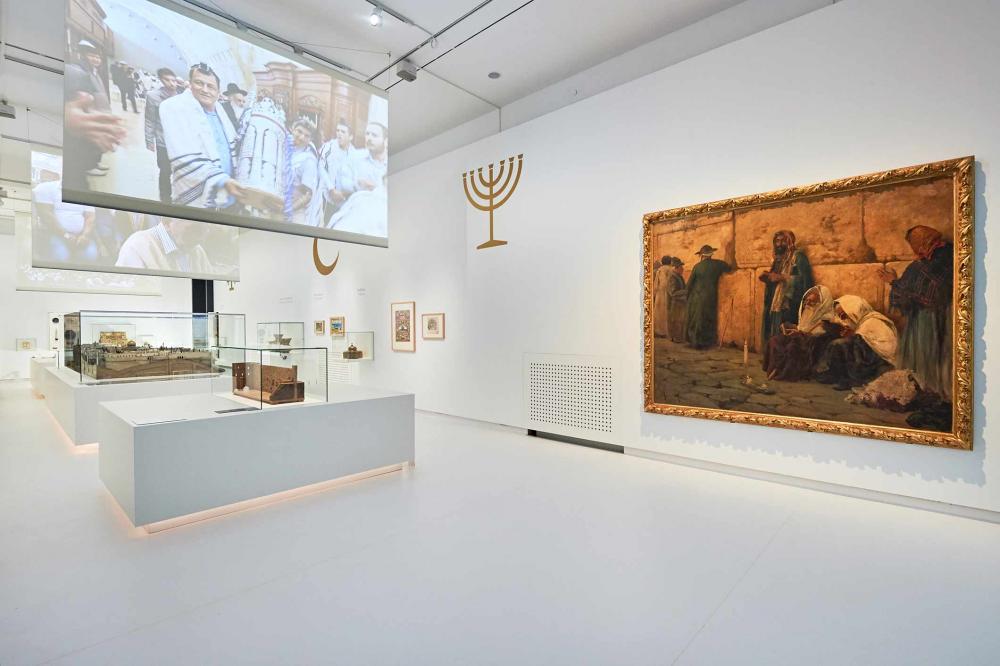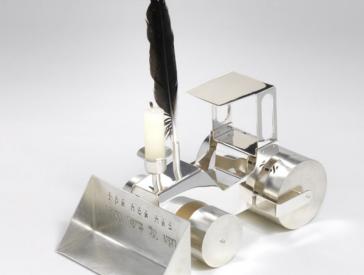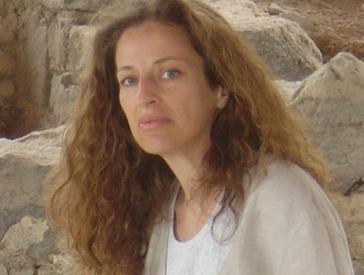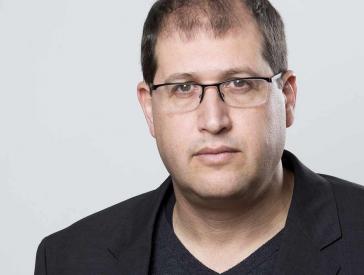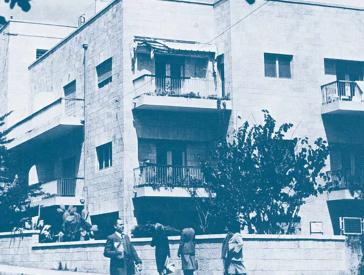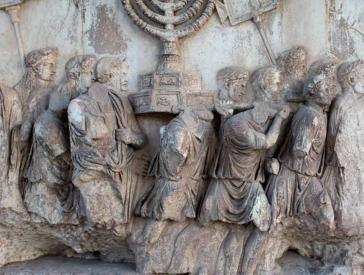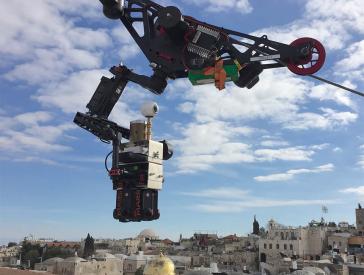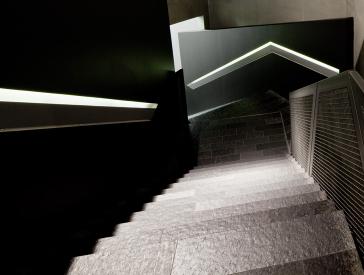![The Jerusalem cityscape; by Berthold Werner (Own work) [Public domain], via Wikimedia Commons](/sites/default/files/styles/media_w1920/public/media/images/jerusalem-keyvisual-neu.jpg?itok=99E0GQ0P)
Welcome to Jerusalem
Our Major Themed Exhibition
Synagogues, churches, and mosques shape our image of Jerusalem. The “Holy City” is an important center of faith for Jews, Christians, and Muslims from all over the world. Simultaneously, Jerusalem is home to extraordinary political tensions, claimed as the capital city by both Israelis and Palestinians.
From the age of the second temple to the Roman conquest, from Ottoman rule and the British mandate until the present day, the exhibition Welcome to Jerusalem investigated the history of a city where daily life, religion, and politics are inextricably interwoven. It included precious objects and models that were on display for the first time in Berlin. They were complemented by media installations developed especially for the exhibition.
Works by Harun Farocki, Nira Pereg, Yael Bartana, Mona Hatoum, Gustav Metzger, Fazal Sheikh and other international artists responded to historical events and political standpoints. Interviews from the documentary 24h Jerusalem introduced visitors to a city that is remarkable and vibrant in every respect.
The Exhibition’s Themes – a Selection
Here’s an overview of selected themes of the exhibition:
The Holy City
Each of the three monotheistic religions built monumental structures in Jerusalem that are revered as holy sites.
In the Jewish tradition, the primal events of the Bible - such as the covenant that God made with Abraham and his descendants - are thought to have occurred on the hill where the Temple would later stand. The Temple Mount is thus a site of God’s eternal presence, a place where history will end and creation will be perfected.
Christians venerate the place of Christ’s crucifixion and resurrection, now covered by the Church of the Holy Sepulchre, known to Orthodox Christians as the Church of the Resurrection.
The holy Muslim buildings are the Dome of the Rock, Islam’s oldest shrine, and the Al-Aqsa Mosque, its third most important house of prayer. Together, these form the precinct of Haram esh-Sharif, or “Noble Sanctuary,” which many Muslims regard as a single sacred unity.
Conflict
Jerusalem has been a major arena of the Middle East conflict for almost a century. Irreconcilable claims of Jews and Arabs to have their own state in Palestine led increasingly to conflicts between the two groups.
In 1947 the United Nations suggested partitioning the country, but this was not recognized by the Arab countries. During the subsequent war roughly half of the Palestinian population either fled or was driven out of the country. On May 14, 1948, Israel declared its independence and Jerusalem was divided up between Israel and Jordan.
In 1967, Israel took over also the eastern part of the city. Jerusalem then had a unified administration, but the Palestinian residents were not recognized as Israeli citizens, receiving only a residence permit for the city. Hopes for an end to the conflict have thus far been unsuccessful. The issue of Jerusalem's political future was one of the main issues involved in the failure of the peace process of the 1990s.
Pious Protests: Religious Perspectives on Jerusalem
Jerusalem is a city where frictions arise not only between different religions, but also between different, often contradictory, interpretations within these religions. The exhibition examined three Jewish groups as examples: the ultra-Orthodox Jews who reject certain aspects of the modern state of Israel as sacrilegious, the Women of the Wall, who want to establish a practice of egalitarian prayer at the Wailing Wall, and, finally, the Temple movements, some of which aim to build a third Jewish Temple on the Temple Mount. Their different demands and expectations have led to minor and major conflicts with other groups, denominations, and the Israeli state.
Artist’s Works
The exhibition expanded its view of Jerusalem with works of contemporary artists.
This theme has been dealt with by artists of various backgrounds and spanning several generations. The earliest works date from the late 1990s, a time influenced by the Oslo Accords.
During this period, Mona Hatoum created Present Tense for a gallery in Jerusalem, in which she takes up the re-mapping of Palestine. Only a short time later, Gustav Metzger, founder of auto-destructive art, created Jerusalem, Jerusalem, a challenge to perceive historical events in a nuanced manner. The five portraits and landscapes in the Memory Trace series by Fazal Sheikh created a memory landscape of Jerusalem’s periphery that has great suggestive force. The Vest of Prayers created by Andi LaVine Arnovitz was recently made, especially for the exhibition. Rounding out this section is Wolfgang Strassl's photo series on the settlement landscape around Jerusalem.
Daily Life in Jerusalem
Nowhere else in the world does the density of houses of worship seem greater, nor the division of the population deeper. Although Jerusalem has had a unified administration since 1967, Jewish Israelis and Arab Palestinians live largely separate, either in the western or eastern part of the city. Almost half of the city’s inhabitants have an income below the poverty level, including many Palestinians and ultra-orthodox Jews. But Jerusalem is much more than just conflict.
24h Jerusalem
The real-time documentary 24h Jerusalem, by Volker Heise and Thomas Kufus, explores the everyday life of ninety Jerusalem residents who were filmed over the course of a single day. With the help of seventy camera teams, Israeli and Palestinian filmmakers, as well as documentary and feature film directors from Germany, an extensive work emerged that impressively reflects the city’s diverse social fabric.
In order to capture the wide variety of moods, director Volker Heise let Palestinians and Israelis talk without commenting or offering judgments on the footage. The result is a kaleidoscope of biographical insights.
Jerusalem in Berlin
Jerusalem makes its presence felt in Berlin as well. The names of many Berlin churches allude to Jerusalem, whether Golgotha, the Holy Cross, Zion, or Gethsemane. Most of these churches were built in the nineteenth century, when public interest in the Holy Land was growing. The missionary idea was promoted at the highest level and was received enthusiastically in Berlin society. The Lutheran Jerusalem Association, founded in that period, is still active today.
But Jerusalem’s roots in Berlin are deeper still. The history of the Jerusalem Church and of the district of Tempelhof (“Temple Court”) goes back to the Crusades. There are also more recent references to the holy city: the residential complex New Jerusalem, the Bethany cultural center, the Golgotha beer garden. Academically, close links have been forged between the Free University Berlin and Jerusalem's Hebrew University.
Aside from Christian Jerusalem, the Dome of the Rock and the Al-Aqsa Mosque are constant companions for those Berliners who came here from Palestine. Especially in the Neukölln district, images of these sites adorn wall hangings, key rings, scarves, and posters in stores, cafés, snack bars, and private homes.
Video Works in the Exhibition
by Yael Bartana, Nira Pereg and Harun Farocki
Harun Farocki: Transmission
22 February 2019 to 30 April 2019
This work in video from 2007 addresses the ritualized gesture of touching quasi-sacred objects, as encountered at holy sites, memorial sites, places of remembrance, and graves in many cultures. This gesture arises from the conviction that such places radiate a special energy that we can partake of and connect to. Our contact with the objects manifests a deeply emotional experience which the film documents as an expression of the conditio humana. The Church of the Holy Sepulchre in Jerusalem is among the sites represented in the film.
Nira Pereg: Sabbath 2008
1 May 2018 to 21 February 2019
The film work Sabbath 2008 documents the closing down of the ultra-orthodox neighborhoods in Jerusalem, on the eve of the Sabbath. Temporary metal barriers are put in place by neighborhood residents, with the approval and support of the Jerusalem municipality and the police. Once the barriers are erected, no private or public cars are allowed in, thus create an artificial border between these areas and the rest of the city.
Although the value of these somewhat rickety barriers may appear above all symbolic, their presence is a source of friction and conflict; and seem to delineate a clear-cut boundary between the sacred and the mundane.
Yael Bartana: Inferno
11 December 2017 to 30 April 2018
The starting point of Yael Bartana’s installation Inferno (2013) is the construction of the third Temple of Solomon in São Paulo by the Universal Church of the Kingdom of God, a Brazilian Neo-Pentecostal Church. Built to biblical specifications, this new temple is a replica of the First Temple in Jerusalem, the violent destruction of which signaled the diaspora of the Jewish people. Inferno confronts this conflation of place, history, and belief, providing insight into the complex realities of Latin America that have given rise to the temple project. Bartana’s film employs what she refers to as “historical pre enactment,” a methodology that commingles fact and fiction, prophesy and history. Using a powerful cinematic language, Inferno collapses histories of antiquity in the Middle East with a surreal present unfolding halfway around the world.
Views of the Exhibition Rooms
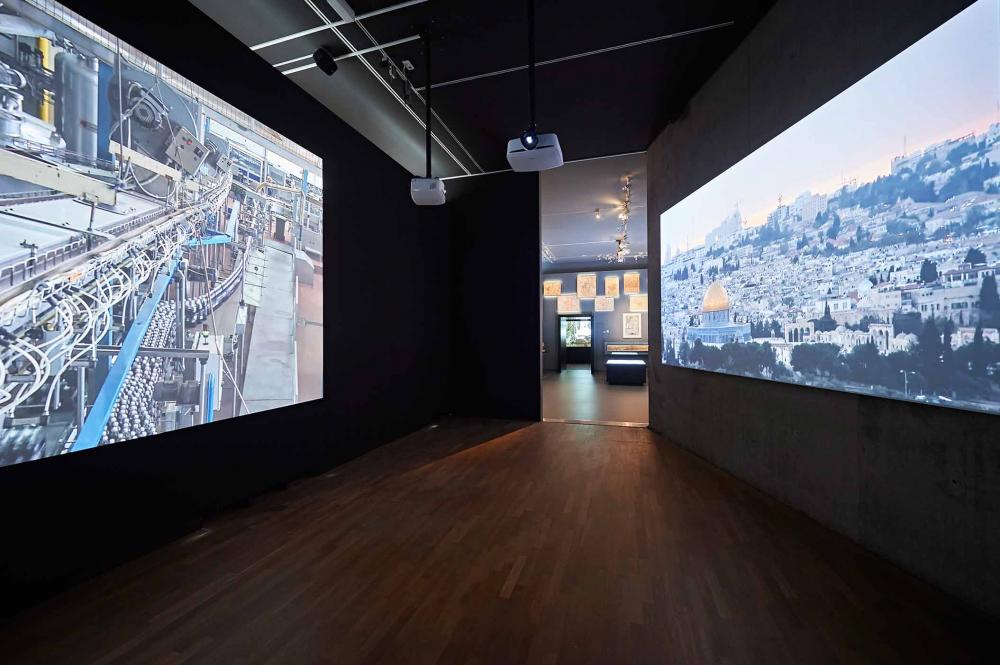
The exhibition begins in the Welcome to Jerusalem room with clips from the 24h Jerusalem documentary; Jewish Museum Berlin, photo: Yves Sucksdorff
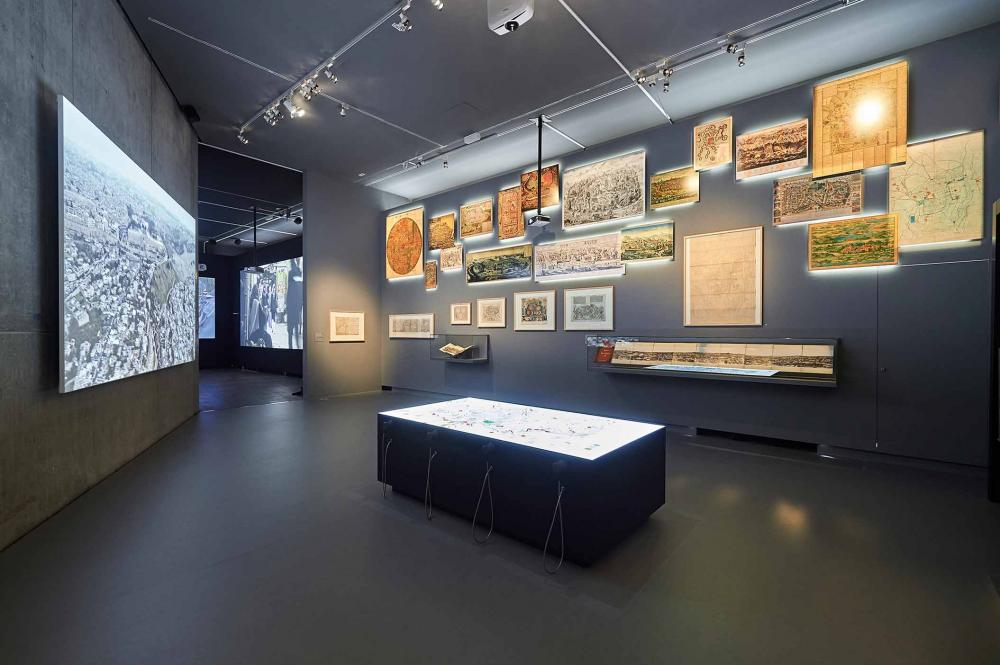
A variety of maps adorn the walls in the room Mapping the City; Jewish Museum Berlin, photo: Yves Sucksdorff
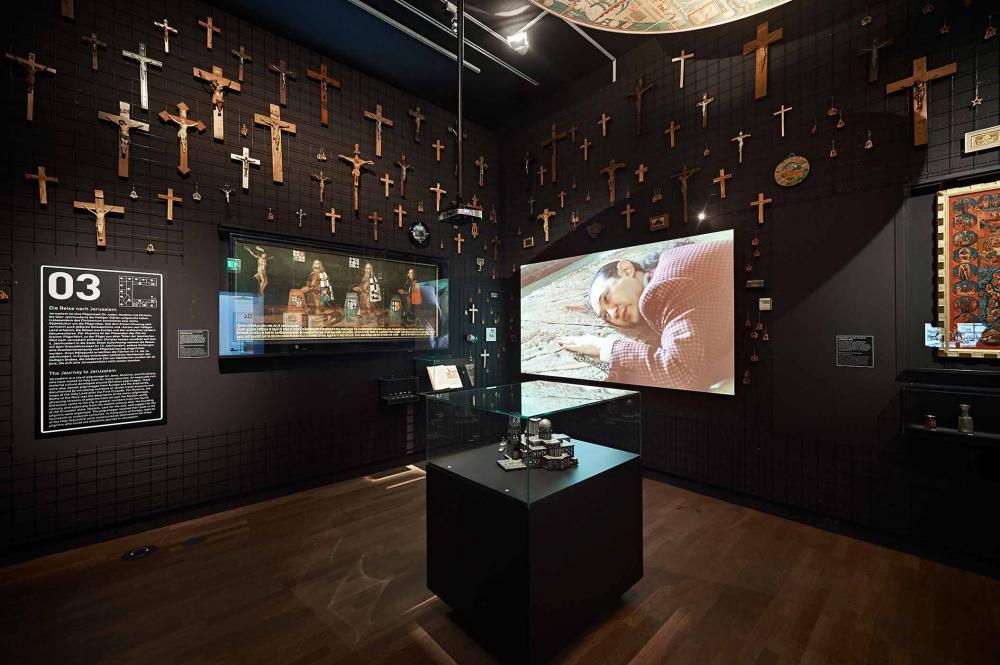
The exhibition room Journey to Jerusalem is dedicated to the pilgrim theme; Jewish Museum Berlin, photo: Yves Sucksdorff
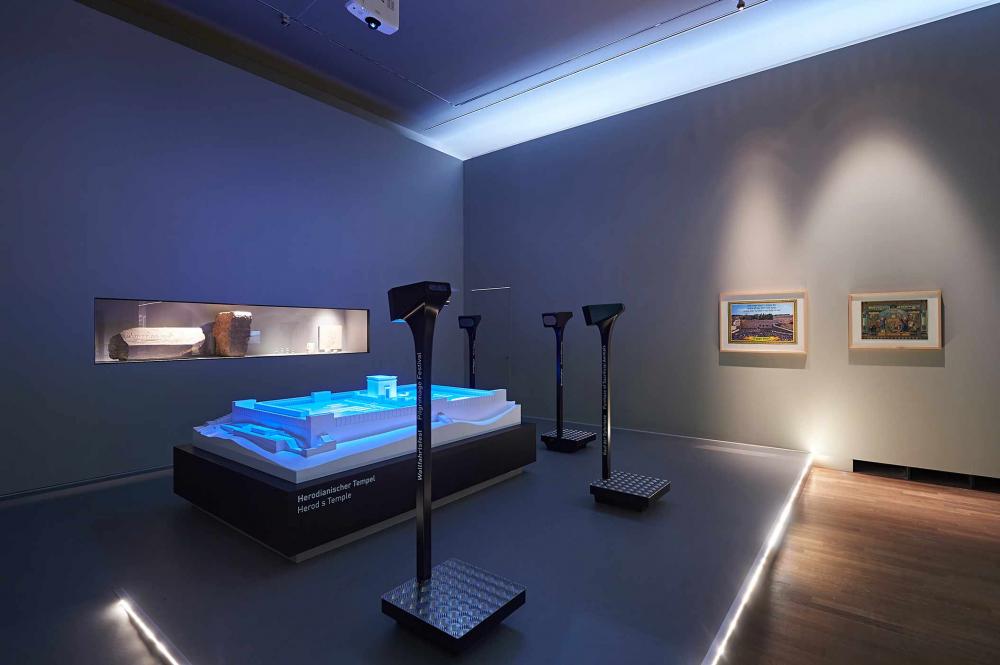
View of the exhibition room “The Temple in Judaism” with the media installation “Augmented Temple”; Jewish Museum Berlin, photo: Yves Sucksdorff

A plaster cast of the relief from the Arch of the Titus in Rome is in the room The Temple in Judaism; Jewish Museum Berlin, photo: Yves Sucksdorff
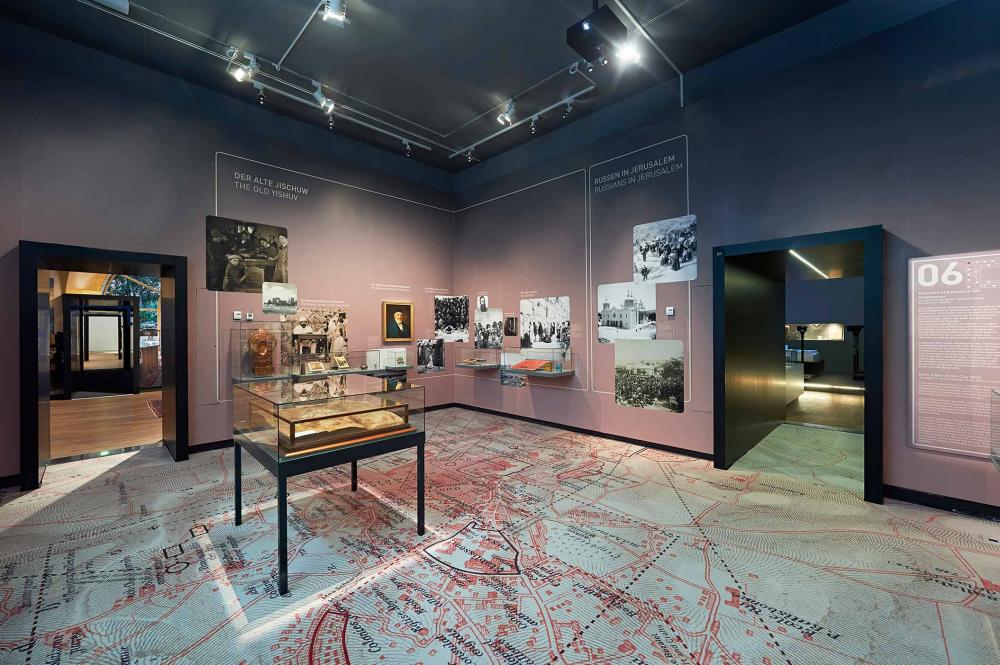
View of the exhibition room “Both Sides of the City Wall”; Jewish Museum Berlin, photo: Yves Sucksdorff
Behind the Scenes: Entries on the Exhibition “Welcome to Jerusalem” (9)
Events Accompanying the Exhibition: Welcome to Jerusalem (6)
Exhibition Information at a Glance
- When 11 Dec 2017 to 1 May 2019
- Where Old Building, level 1
Lindenstraße 9-14, 10969 Berlin
See Location on Map
With funding provided by the Federal Government Commissioner for Culture and the Media on the basis of a resolution by the German Bundestag.

With the kind support of LOTTO-Stiftung Berlin.

The program accompanying the exhibition was supported by Siemens AG.
Media partners



















![The Jerusalem cityscape; by Berthold Werner (Own work) [Public domain], via Wikimedia Commons](/sites/default/files/styles/large/public/media/images/audioguide-jerusalem-16-teaser_v2.jpg?itok=mj_aF8qZ)























